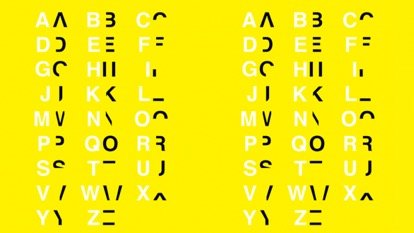Dyslexia: The Typeface

Multidisciplinary designer and GMD alumnus Daniel Britton’s new typeface has now gone viral on sites all over the world. It was featured in February’s Design Indaba 2018 in South Africa and the 2017 Global Grad Show. The font is named after the common reading disorder and ‘Dyslexia’ replicates a dyslexic person’s experience of reading.
Approximately 160 million people around the world have dyslexia. It is considered to be a cognitive disorder – the brain’s language processing centre has difficulty registering the order of letterforms – and is not a problem with intelligence. But emotional problems often arise due to the frustration of not being able to read at what is considered a normal pace, especially amongst young children. Different people are affected by dyslexia to varying degrees. Generally, it is marked by the inability to speed read, difficulty with spelling words and poor phonological awareness.
To give average readers a sense of what this is like to live with, Britton has created a font in which roughly 40 per cent of each letterform has been removed, leaving behind the original shape only partially visible. Instead of adding obstacles to each character or obscuring it in some way, the designer decided to cut away portions from each letterform – just enough to make for tough reading. It forces the reader to slow down and engage with the text. That Dyslexia has a rather stylish, minimalist appeal is incidental.
“Only once a problem is fully understood can it be solved,” says Britton, “This typeface recreates the feeling of reading with dyslexia for a non-dyslexic person therefore creating empathy and understanding for the problem.” According to the designer, the frustration experienced by dyslexic students who are otherwise perfectly able to learn, must be addressed. As a cognitive disorder that can be treated, dyslexia should by no means deter anyone from further education.
“I believe that once dyslexia is properly understood, we can create better learning conditions for dyslexic students and let them excel in the same way that every other person can. If we can increase our understanding and give the correct help to these people, just think, how many more Richard Bransons, Elon Musks or Boyan Slats we can produce?”
